
Food and Fuel: Solutions for the Future
by
Andrew Heintzman
,
Evan Solomon
and
Eric Schlosser
Published 2 Feb 2009
Its failure to imagine a new energy era and to take the steps to get there could put the United States significantly behind Europe as a world power by mid-century. Laying the Groundwork for the Hydrogen Economy in Canada In order to jump-start the hydrogen economy in Canada, the federal government should consider adopting a number of high-visibility initiatives. First, create a high-level working group to draft a blueprint for Canada to become an integrated hydrogen economy by the year 2050. Second, assemble a consortium of universities, technical institutes, and government laboratories to help facilitate research and development of hydrogen technology and related products and services.
…
Toward a Third Industrial Revolution The harnessing of hydrogen will alter our way of life as fundamentally as did the introduction of coal and steam power in the nineteenth century and the shift to oil and the internal combustion engine in the twentieth century. Championing a fifty-year plan to build a hydrogen economy is a grand economic vision on the scale of the first and second industrial revolutions in North America. By taking a commanding lead in building a hydrogen infrastructure for Canada and by developing renewable resources and hydrogen technologies and related products and services, the Canadian economy can help to set the twenty-first-century economic agenda for the rest of the world. Investing in a hydrogen economy will reinvigorate capital markets, spur productivity, create new export markets, and increase the GDP of Canada.
…
And because the installation of renewable technologies and the establishment of a hydrogen infrastructure as well as the reconfiguration and decentralization of the nation’s power grid are geographically tied, the employment generated will all be within Canada. If both the technologies and technical know-how that comprise the hydrogen economy are also produced by research institutes and Canadian-based companies, additional domestic employment will be generated. Making the transition to the hydrogen era provides a unifying vision for the environmental movement and offers the first real hope of creating a truly sustainable global economy for future generations. By eliminating carbon dioxide altogether from the economic equation, the hydrogen economy leaps ahead of the current paltry and piecemeal efforts to reduce greenhouse gas emissions.

The Weather Makers: How Man Is Changing the Climate and What It Means for Life on Earth
by
Tim Flannery
Published 10 Jan 2001
In the 1970s the Australian electrochemist John Bockris coined the phrase ‘hydrogen economy’ and ever since, for many people, hydrogen appears to be the silver-bullet solution to the world’s global warming ills. ‘Boiled down to its minimalist description,’ Bockris wrote, ‘the “Hydrogen Economy” means that hydrogen would be used to transport energy from renewables (at nuclear or solar sources) over large distances; and to store it (for supply to cities) in large amounts.’5 As with so many silver-bullet solutions, however, there’s a lot of devil in the detail. The power source of the hydrogen economy is the hydrogen fuel cell, which is basically a box with no moving parts that takes in hydrogen and oxygen, and puts out water and electricity.
…
Even if hydrogen is made safe to use, we are still left with a colossal CO2 pollution issue, which was exactly the opposite of what we set out to do. The only way that the hydrogen economy can help combat climate change is if the electricity grid is powered entirely from carbon-free sources. And this means acceptance of and investment in a series of technologies ranging from solar to nuclear. Strangely, neither the US government nor the vehicle manufacturers have shown much interest in laying the groundwork for this essential prerequisite for transition to the hydrogen economy. 5 THE SOLUTION TWENTY-NINE BRIGHT AS SUNLIGHT, LIGHT AS WIND Once we open the door to consider catastrophic changes, a whole new debate is engaged.
…
Perhaps they will wear green helmets rather than blue, but the UN peacekeepers offer a fine model as to how this arm of the commission might first evolve. So delicate is our atmosphere, and so vast is the human burden now being placed upon it, that the work of our commission could not possibly cease with the greenhouse gases: even the hydrogen economy may come under its purview. Molecular hydrogen is a trace atmospheric gas which is present at just a half a part per million in the atmosphere, with a life span of just two years. The future hydrogen economy requires the annual transport of several times the total amount of hydrogen present in the atmosphere today and, as we have seen, hydrogen is liable to leak.2 By replacing half of current fossil fuel use with hydrogen we risk doubling its atmospheric concentration.
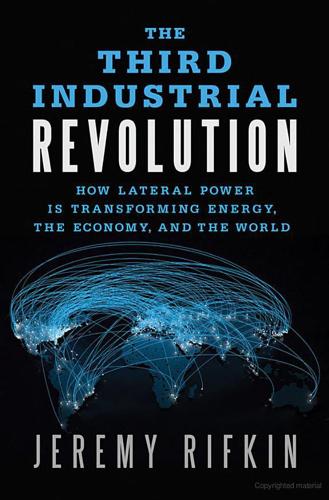
The Third Industrial Revolution: How Lateral Power Is Transforming Energy, the Economy, and the World
by
Jeremy Rifkin
Published 27 Sep 2011
In June of 2003, at a Brussels conference, he announced a €2 billion hydrogen research initiative by the Commission to ready Europe for a hydrogen economy. In his opening remarks he explained the historic significance of employing hydrogen as a storage medium for a Third Industrial Revolution infrastructure: “But let us be clear about what makes the European hydrogen program truly visionary. It is our declared goal of achieving a step-by-step shift towards a fully integrated hydrogen economy, based on renewable energy sources, by the middle of the century.”37 Pillar 3 was now in place. In 2006, I prepared a second memo on the subject for Chancellor Merkel, suggesting that Germany launch its own hydrogen research and development initiative.
…
I had been talking up the possibility of transforming the power grid into an intergrid for sharing energy in my Wharton School’s Executive Education classes and in presentations with utility companies like Scottish Power, Cinergy, and the National Grid. The idea of an intelligent electricity grid was the central theme of my 2002 book, The Hydrogen Economy. I wasn’t the only one talking about it. Amory Lovins, in particular, had been raising the prospect for a number of years, as had a number of other power and utility wonks. As early as 2001, the Electric Power Research Institute (EPRI) observed in its report, “Perspectives for the Future,” that distributed generation would likely evolve in much the same way the computer industry has evolved.
…
He then invited me to make a presentation on the Third Industrial Revolution to all of his Senate colleagues at their traditional Thursday lunch session. The lunch was set for March 20, just hours after the United States began its bombing campaign over Iraq. The senators were clearly preoccupied as they filed into the room and I wondered how I was going to keep their attention long enough to talk about a future hydrogen economy and how it related to the other pillars that make up the infrastructure of a new commercial era. Here we were in another war in the Middle East with the prospect of mass casualties and years of occupation. The media in other parts of the world, if not America, were already calling it an “oil war.”
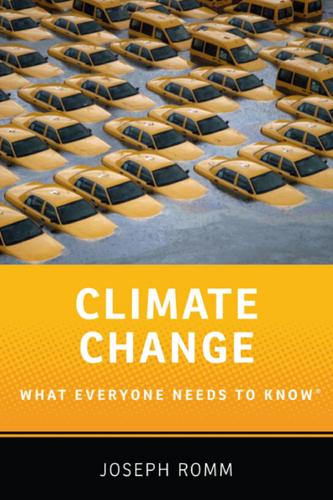
Climate Change
by
Joseph Romm
Published 3 Dec 2015
So hydrogen fuel cell cars were not going to be major contributor to addressing climate change. A 2013 study by independent research and advisory firm Lux Research came to a similar conclusion. Their study “The Great Compression: The Future of the Hydrogen Economy” concluded that despite billions in research and development spent in the past decade, “The dream of a hydrogen economy envisioned for decades by politicians, economists, and environmentalists is no nearer, with hydrogen fuel cells turning [into] a modest $3 billion market of about 5.9 GW in 2030.” For the purposes of this book, I am not discussing stationary fuel cells as a climate solution, because there is little reason to believe they will be a major contributor.
…
It requires materials and components that are complicated and costly. In addition, even a 10,000-psi tank takes up seven to eight times the volume of an equivalent-energy gasoline tank or perhaps four times the volume for a comparable range (because the FCV will be more fuel efficient than current cars). The 2004 National Academies of Science study on “The Hydrogen Economy” concluded that both liquid and compressed storage have “little promise of long-term practicality for light-duty vehicles” and recommended that DOE halt research in both areas. Practical hydrogen storage requires a major technology breakthrough, most likely in solid-state hydrogen storage. Yet, a decade later, nearly all hydrogen demonstration vehicles as well as those planned for market introduction still use compressed hydrogen storage.
…
The former group leader for energy storage programs at Ford has argued “it is difficult to imagine how hydrogen risks can be managed acceptably by the general public when wide-scale deployment of the safety precautions would be costly and public compliance impossible to ensure.” It seems likely that major innovations in safety will be required before a hydrogen economy is practical. Another key issue is the infrastructure problem. Hydrogen fueling stations are very expensive, generally $1 million to $2 million, because safely pressurizing hydrogen to 10,000 pounds per square inch pressure is not easy. In addition, many stations receive (and store) hydrogen as a super-cooled liquid, which requires great care.

How to Spend a Trillion Dollars
by
Rowan Hooper
Published 15 Jan 2020
We’ll make all this happen faster and at a scale that means the costs of hydrogen production and storage come down as fast and as far as have wind and solar. We’ll aim to make it economic to use hydrogen in all of these areas of the economy. ‘It will be expensive to get to a hydrogen economy,’ says the carbon analyst and writer Chris Goodall, ‘but there isn’t really any alternative. Renewables plus hydrogen may also be the cheapest way of getting to net zero.’24 Support for a hydrogen economy has ebbed and flowed, the sticking point being mainly that almost all hydrogen produced at the moment is made directly from fossil fuels, mostly methane. A small amount of hydrogen is currently produced by electrolysis, but that process is itself powered by fossil fuels.
…
DOI: 10.1038/s41929-019-0244-4 24 See also Chris Goodall (2020) What We Need To Do Now: For a Zero Carbon Future. London: Profile Books. 25 Gunther Glenk and Stefan Reichelstein (2019) ‘Economics of converting renewable power to hydrogen’. Nature Energy 4, 216–222. DOI: 10.1038/s41560-019-0326-1 26 BloombergNEF (2020) ‘“Hydrogen economy” offers promising path to decarbonization’. https://about.bnef.com/blog/hydrogen-economy-offers-promising-path-to-decarbonization/ 27 E&E News (2019) ‘Details emerge about DOE “super-grid” renewable study’. www.eenews.net/stories/1061403455 28 Peter Fairley (2020) ‘How a plan to save the power system disappeared’. Atlantic. www.theatlantic.com/politics/archive/2020/08/how-trump-appointees-short-circuited-grid-modernization/615433/ 29 Mark Jacobson et al. (2017) ‘100% clean and renewable wind, water, and sunlight all-sector energy roadmaps for 139 countries of the world’.
…
The report found that removing subsidies would cut global emissions by about 25 per cent, and the number of premature deaths from air pollution by about 50 per cent. Achieved Acceleration of the transition to net zero with investment in a range of schemes and industries; the preservation of a world both prosperous and sustainable, livable and equitable. Money spent Deployment of renewable energy capacity: $860 billion Development of the hydrogen economy (including electrofuels, biofuels): $50 billion Incentives for low-carbon rail infrastructure: $20 billion Incentives for electric vehicles: $5 billion Development of nuclear fusion: $5 billion Development of modular nuclear power: $30 billion Incentives for carbon zero buildings: $10 billion Decarbonisation of industrial processes: $20 billion TOTAL: $1 trillion * Analysts at Sanford C.
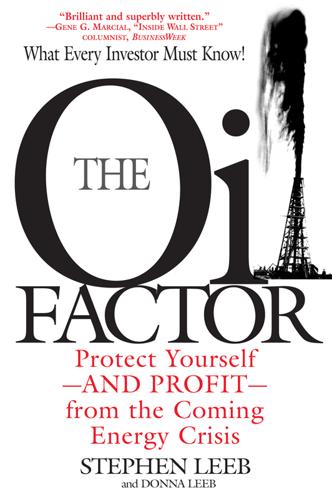
The Oil Factor: Protect Yourself-and Profit-from the Coming Energy Crisis
by
Stephen Leeb
and
Donna Leeb
Published 12 Feb 2004
But so far, the materials that are able to split water don’t absorb sunlight effectively enough to be useful or economical, converting only 1 to 2 percent of the energy from sunlight into stored chemical fuel. The materials that absorb sunlight more efficiently aren’t constituted in such a way as to be able to split water. This is one roadblock to achieving a true hydrogen economy. There is a second problem: we need to make giant strides in our ability to store and transport hydrogen safely and efficiently. Hydrogen is a relatively unstable element, and you can’t just put it into, say, a canister and carry it around. Research is being done on creating lightweight but safe composite materials more suitable for hydrogen storage than anything we have now.
…
Research is being done on creating lightweight but safe composite materials more suitable for hydrogen storage than anything we have now. And that’s still not all. If and when such materials are developed, the next issue would be building the large amount of infrastructure needed to have hydrogen available for widespread use. In sum, it seems to us that a real solar-based hydrogen economy is a long way off, many decades away at best. We’re not dismissing it as an ultimate possibility and think it’s an area that merits significant funding for research, but we certainly don’t think there is any possibility that it will be up and running in time to help us deal with the oil shortages and rising oil prices that lie in our more immediate future.
…
In fact, the front page of the March 5 business section of the New York Times had the headline, “Hydrogen Vans and Pumps Head for Washington.” And President Bush in his 2004 budget proposal included a $1.7 billion subsidy for research into cars powered by hydrogen fuel cells. Maybe we’re being unduly pessimistic, and a hydrogen economy is closer at hand than we think? Not exactly. First, the touted General Motors hydrogen cars cost around $5 million each. GM’s vice president for research, Larry Burns, said he was optimistic that the company could produce an affordable car running on a hydrogen fuel cell by 2010, though he admitted it would be a challenge.
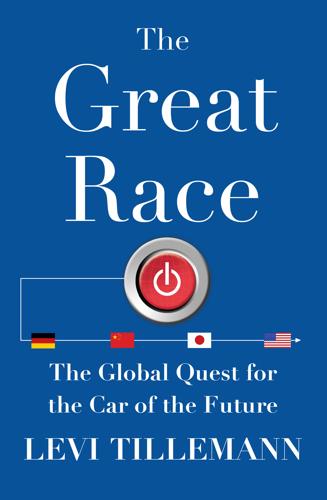
The Great Race: The Global Quest for the Car of the Future
by
Levi Tillemann
Published 20 Jan 2015
5 Sudden Impact From Darwin to Adelaide Getting the Impact Out of the Chute Proof of Concept Nobody Paid Any Attention: Methanol, Natural Gas, and ZEVs A Matter of Perspective 6 CARB’s Long Reach Detroit Was King “No Plan B”: Commercializing Electric Vehicles California and Japan Toyota’s Moon Shot The Curious Case of Honda Trees Emit More Pollution than Hondas Defending the Mandate 7 The Electric Car Is Dead, Long Live the Electric Car Who Killed the Electric Car? The Culprits 8 Catching China’s Eye Revolutionary Road Leapfrog: Revolutions, Refugees, and the Education of Wan Gang Shame for Glory Part II Leapfrog 9 Sea Turtles, Spaceships, and the Hydrogen Economy Hearts and Minds Freedom from Electricity Wan Gang and His Sea Turtles Keeping Up Appearances 863’s Wild Ride Finding “Some Alternative” 10 Crazy Anegawa The Long Shadow of Fukushima Cars, Trucks, and Boats On the Ropes: Japan’s EV Industry After California The “Two Bests”: Toppling Toyota and Honda Searching for Hercules in Japan A “Halo Car” EVs Within Reach The Dream Machines Convening the Mandarins Into the Mainstream Not Quite First: Nissan Joins the Fray NEC: Subaru’s Heartbreaker 11 I’ll Be Back: California Returns Clean Cars (aka Pavley) Iron Man 1 Iron Man 2 12 Challenging the Big Green Monster Bush-Whacked Part III Three Crises 13 “Scared Shitless”: America’s Industrial Implosion The Lehman Shock Washington’s Cool Response Electroshock Therapy “Is This for Real?”
…
Poised on the starting line of the next and possibly final heat of the Great Race, they hoped that if China ran hard enough, it might retake the crown from Japan and America. The stakes were more than wealth, power, or global economic leadership. The prize was a victory that could expunge a century of humiliation, and supplant shame for glory. Wan Gang’s strategy was a go. Part II Leapfrog 9 Sea Turtles, Spaceships, and the Hydrogen Economy AFTER ALMOST a decade of technology-forcing policies, California’s regulators were beginning to have second thoughts. The goal of achieving a zero-emissions vehicle was still there, but the mechanics of making it happen were increasingly unclear. Two decades earlier the Air Resource Board had succeeded in stimulating a global revolution in pollution control by mandating that automakers reach emissions standards that most declared to be impossible.
…
Not only would they allow a dramatic expansion in nuclear power; they would increase plant utilization during off-peak hours. EVs could charge at night, while lights and other appliances were turned off. This could allow TEPCO to potentially sell a lot more electricity without building any expensive new generation plants. But it wasn’t just self-interest. Anegawa simply didn’t buy the whole “hydrogen economy” story that Toyota and Honda—and America—had been selling. Anegawa thought that fuel cells had major obstacles in terms of cost, infrastructure, hydrogen storage, and the carbon-free production of hydrogen fuel. In fact, there was a running joke in the automotive community that hydrogen was the fuel of the future, always had been the fuel of the future, and always would be the fuel of the future.
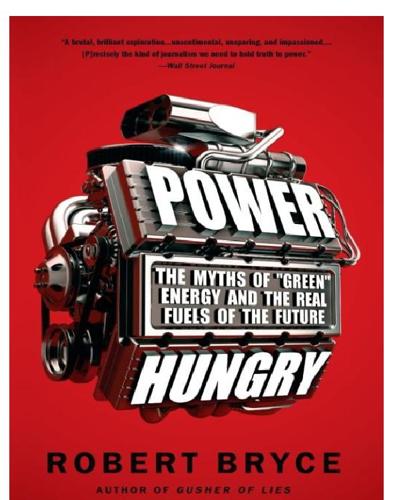
Power Hungry: The Myths of "Green" Energy and the Real Fuels of the Future
by
Robert Bryce
Published 26 Apr 2011
Aguilera of the Vienna-based International Institute for Applied Systems Analysis put it in a March 2009 analysis, “we are on our way towards a methane economy that could pave the way to a hydrogen economy.”21 The trend toward gaseous fuels and the decarbonization trend are companions. About 95 percent of the hydrogen now being produced is derived from natural gas.22 Thus, the long-anticipated and much-hyped “hydrogen economy,” if it ever arrives, must begin with a methane economy. And over the past few years, thanks to improvements in drilling and recovery technologies, the estimated volumes of the world’s recoverable natural gas resources have skyrocketed.
…
In addition, the agency has issued the Clean Air Mercury Rule, which aims to cut the releases of mercury from coal-fired power plants.20 Those federal requirements will, in the coming years, favor natural gas and nuclear power over the use of coal. The decarbonization trend is closely connected to another megatrend as well: the increasing use and availability of gaseous fuels. The hydrogen economy remains decades away. But the increasing use of natural gas confirms the projections made by analysts who have predicted that the world’s consumers will increasingly replace solid and liquid fuels with gaseous ones. Of course, the world will continue using coal, and lots of it, and oil, and lots of it, for many decades to come.
…
And the process of burning the waste also produces significant quantities of energy that can be captured to produce electricity. There are several methods for producing the fast neutrons needed for transmutation, but one promising technology appears to be a hybrid reactor that combines both fusion and fission. Fusion’s reputation has been tarnished by an excess of hype. Just like fuel cell–powered cars and the hydrogen economy, producing electricity from fusion has been touted as the Next Big Thing for decades. But the hybrid fusion reactors now being discussed are not designed for electricity production. Instead, their main purpose would be the production of fast neutrons, a process that is far less technically demanding.
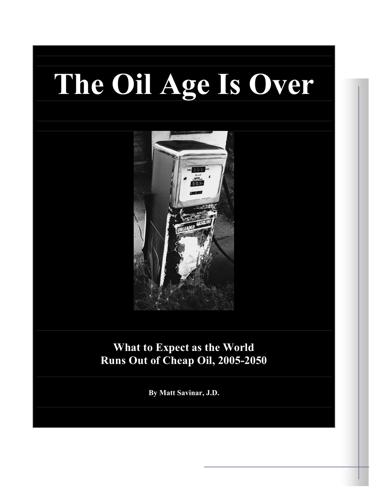
The Oil Age Is Over: What to Expect as the World Runs Out of Cheap Oil, 2005-2050
by
Matt Savinar
Published 2 Jan 2004
Hydrogen was ruled out as a solution because of intensive costs of production, inherent energy inefficiencies, lack of infrastructure, and practical difficulties such as the extreme cost and difficulty of storage.80 You may be wondering, "But didn't Bush say in the 2003 State of the Union speech that he was giving billions to develop the hydrogen economy?" Yes, he did say that, but he didn't mention that the money was going to fund using nuclear power to get the hydrogen. The limitations of nuclear power are discussed next. 36. What about Nuclear Power? If we're desperate, we won't have any choice but to use it. Nuclear power accounts for 8% of US energy production.81 As a replacement for oil, it is unsuitable for the following reasons: 1.
…
I believe that the renewable energy charade is being kept up for two reasons: 47 The Oil Age is Over 1. Pacify the public, so they don't become alarmed at the obvious signs that fossil fuels are dwindling. 2. Keep the transportation industries insulated from the stock collapse that would ensue if the public knew the truth about things such as the “Hydrogen Economy.” 48 Part IV Issues of Economy, Technology, and the Ability to Adapt "Facts do not cease to be facts simply because they are ignored." -Aldous Huxley "Anybody who believes exponential growth can go on forever in a finite world is either a madman or an economist." -Kenneth Boulding "If you think a magic bullet solution is going to solve your problems, you may as well shoot yourself."
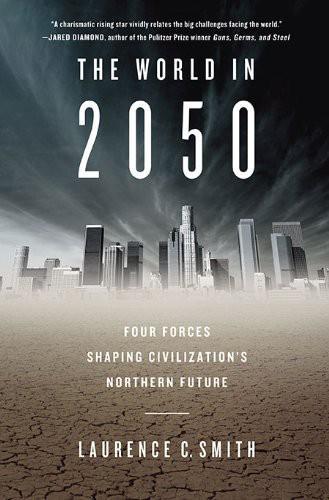
The World in 2050: Four Forces Shaping Civilization's Northern Future
by
Laurence C. Smith
Published 22 Sep 2010
Early hydrogen supplies are all but certain to be made from fossil fuels, and thus will help little with reducing carbon emissions. In light of these challenges, most experts agree that a hydrogen economy lies at least thirty to forty years in the future, at which point hydrogen fuel-cell cars might possibly be the new “next-generation” technology that plug-in hybrids are today. Under the conservative ground rules of our thought experiment, we will assume the world will not convert to a hydrogen economy by the year 2050. Running on Moonshine and Wood Unlike hydrogen, biofuels offer a quicker solution to the liquid-fuels problem. Like gasoline, they are refined hydrocarbons that are burned in an internal combustion engine.
…
By examining these trends collectively, and identifying convergences and parallels between them, it becomes possible to imagine, with reasonable scientific credibility, what our world might look like in forty years’ time, should things continue on as they are now. This is a thought experiment about our world in 2050. It can be fun imagining what our world might look like by then. Robots and flying cars? Custom-grown body parts? A hydrogen economy? As any disappointed sci-fi buff will tell you, the pace of reality is usually slower than human imagination. Fans of George Orwell’s book 1984, the television series Lost in Space and Space 1999, the films 2001: A Space Odyssey, and (it’s looking like) Blade Runner—set in a perpetually raining 2019 Los Angeles—see their landmark years come and go.
…
However, they are released at the hydrogen plant, unless fossil fuels or biomass can be avoided as sources of energy or feedstocks. In principle, solar, wind, or hydroelectric power could be used to split hydrogen from a water feedstock, making the entire process quite pollution-free from beginning to end. Sounds wonderful, and many energy experts and futurists believe that one day we will have a full-blown hydrogen economy. The ultimate dream is to use solar energy to split hydrogen from seawater, thus providing the world with an infinite supply of clean hydrogen fuel—and even some freshwater as a bonus—with no air pollution or greenhouse gases. But nothing like that will be in place by 2050. Years of research are needed to resolve a rat’s nest of challenges concealed within the previous two paragraphs, with major technology advances and cost reductions necessary in all areas.121 Basic research in hydrogen manufacture, transport, and fuel cells is still lacking.

Taming the Sun: Innovations to Harness Solar Energy and Power the Planet
by
Varun Sivaram
Published 2 Mar 2018
YieldCo market values 4.3 How solar securitization works 4.4 Required investment levels in solar power to limit climate change Chapter 5 5.1 Global distribution of populations without access to electricity 5.2 How the PAYG model works 5.3 Current and forecast cost of an SHS 5.4 Using microgrids and main grid extensions to electrify Nigeria Chapter 6 6.1 Harnessing sunlight with a silicon solar cell 6.2 How a tandem perovskite/silicon cell works 6.3 Comparison of solar PV efficiency across different technologies 6.4 The DOE SunShot 2030 cost road map for solar power Chapter 7 7.1 Diagram of JCAP’s 10-percent-efficient PEC prototype 7.2 A vision of the hydrogen economy 7.3 How a CSP power tower works 7.4 Historical and targeted costs of CSP Chapter 8 8.1 A global supergrid 8.2 Schematic cost comparison of AC versus DC power lines 8.3 The twentieth-century paradigm of the electric grid 8.4 Schematic of what a hybrid grid might look like Chapter 9 9.1 Comparison of lithium-ion battery and solar PV panel costs 9.2 Overview of various electricity storage technologies and attributes 9.3 Estimates of battery storage capacity needed to power the United States with 100 percent renewable energy 9.4 Grid penetration of solar PV as a function of PV and storage costs Chapter 10 10.1 Historical and projected government funding for energy innovation in top countries 10.2 Historical U.S.
…
Already, Japan’s power utilities have warned that its balkanized grid may not be up to the task of integrating large quantities of intermittent solar power, and that the need for storage is growing.33 Still, Japan is taking baby steps toward realizing the second future. The government is third in the world in its funding for research and development (R&D) of advanced solar energy technologies.34 And Japan is enthusiastic about setting up a nationwide hydrogen economy to slash fossil fuel imports and instead run its industries and vehicles off a fuel that could one day be produced from sunlight. The symbolism was all around me as I left Rokkasho. Just as the nuclear reprocessing plant was now behind me, the era of rapid nuclear power expansion is probably behind Japan, for better or worse.
…
Solar-generated hydrogen could be used directly as a transportation fuel for vehicles like the Toyota Mirai. Or it could be combined with carbon dioxide in a facility that might be called a “solar refinery,” to create the same range of hydrocarbon fuels that are produced today in oil refineries and then used in a range of industries and as transport fuels. Figure 7.2 A vision of the hydrogen economy. Source: Reprinted with permission from the Royal Society of Chemistry. As futuristic as all of that sounds, Nocera wants to do something even harder. He wants to bypass hydrogen production and use sunlight, water, and carbon dioxide to produce carbon-containing fuels directly. If this maneuver could be done cost-effectively and at scale, it would be the most efficient, single-shot method of storing sunlight in the most convenient fuels known to humankind.

The Ecotechnic Future: Envisioning a Post-Peak World
by
John Michael Greer
Published 30 Sep 2009
Because of the ready availability of petroleum energy, a huge proportion of industrial society’s capital plant — the collection of tools, artifacts, personnel, social systems, information and human geography, among other things, that provide the productive basis for society — has been designed and built to use petroleum-based fuels, and only petroleum-based fuels. Converting it to anything else involves much more than just providing another energy source. Think for a moment of the difficulties that would be involved in building the sort of hydrogen economy so often touted as the solution to the energy shortages of the near future. For the sake of discussion, grant that the massive amounts of electricity needed to turn seawater into hydrogen gas in sufficient volume will turn up, despite the severe challenges facing every source proposed so far.
…
Much more will be used indirectly, since nearly every commodity and service in the industrial world today relies on petroleum in one way or another. Until a substantial fraction of the hydrogen system is in place, it won’t be possible to use hydrogen to supplement dwindling petroleum production. Instead, the energy costs of building the hydrogen economy will create a massive additional source of demand, pushing fuel prices higher and making scarce fuel even less available for other uses. The same thing is true of any other alternative energy system that attempts to replace an existing fossil fuel. The costs differ depending on how much of the existing infrastructure has to be replaced, but there’s always a price tag — and nearly all of the energy needed to pay that price will have to come from fossil fuels, because those are the 167 168 T he E cotechnic F u t u re energy sources our civilization has on hand right now.
…
Ziarek, Ewa Plonowska, An Ethics of Dissensus: Postmodernity, Feminism, and the Politics of Radical Democracy, Stanford University Press, 2001. 261 Index A advertising, 155–156 agriculture, 25–28, 30, 147 amateur radio, 156–157, 216 anacyclosis, 231 Anderson, Sherry Ruth, 200 appropriate ecology, 215–216 Aristotle, 214 Augustine of Hippo, 207 B Bacon, Francis, 214 Bateson, Gregory, 222 bats, evolution of, 58–61 Bell, Daniel biodiesel, 106, 116, 151 biodynamic agriculture, 103 biointensive organic gardening, 103 biophobia, 114–115 Black Death, 87 bog iron, 72 Brand, Stewart, 121–122 brewers, 147 Brown, Lester, 94–5 Burke, Edmund, 79 C Carson, Rachel, 11 Catton, William, 41 ceramics industry, Roman, 135–137 cities in the deindustrial world, 182–186 263 264 T he E cotechnic F u t u re climate change, 41, 50–54 climax community, 21–23, 25, 29–30 cob building, 123 composting, 107–112, 113, 115 Condorcet, Marquis de, 228 conserver society, 12 Costanza, Robert, 15 “crackpot realism,” 16 Crimean War, 80 CTL (coal-to-liquids) fuel production, 161–162 “cultural creatives,” 200–201 culture death, 49–50 culture wars, 191 D dark age(s), xiii, 150, 184 Darwin, Charles, 193 decline and fall of civilizations, 17, 38, 150, 243 deep time, 62 democracy, 186–188 depopulation, 39, 41–43 Dijkstra, Bram, 193–194 disintegration, political and cultural, 40, 46–50 dissensus, 96–99, 246 draft horses, 116–117 E Easter Island, 20, 89 ecology, 3, 17, 187, 215–216, 221, 240ecosophy, 221–222, 241ecotechnic trades, 149 education industry, 153–154 emergy (embodied energy), 71 energy flows, 4–5 energy slaves, 142–144, 152–153 energy subsidies, 165–166 ethanol, 13–14, 106 evolution, 35, 57–62, 96, 192–193, 237–238, 243–244 external proletariat, 195 Extropian movement, 226 Index F farmer’s markets, 24, 127–128 feces as fertilizer, 112–115 feminism, 131–133 Ferguson, Marilyn, 201 fossil fuels, 8–12, 33, 61, 69–70, 134, 159, 164 Friedman, Thomas, 53 Friedrichs, Pete, 156 Fukuyama, Francis, 225–226, 229 fundamentalism, Christian, 205–6 G Gentile, Giovanni, 229 ghost acreage, 41, 42 Ghost Dance, 63 Gibbon, Edward, 54 globalism, 64 Google, 37–8 Gould, Stephen Jay, 62 Grafton, Anthony, 232 H hedgerows, 216 Hegel, Georg Wilhelm Friedrich, 229–230 Holmgren, David, 103 home economics, 131–133 homeostasis, 84–88 household economy, 128–130, 133–134, 138–139 Hubbert, M. King, 41 Hubbert curve, 41–42, 75 human ecologies, 6–8, 29, 33, 36, 67 “humanure,” 113 Hummer, 13 hunter-gatherer(s), 6, 25, 61–62 hydrogen economy, 166–167 I ibn Khaldûn, 89–91, 231 illusion of independence, 16–17, 33, 79 imaginary futures, xi, 153, 245 265 266 T he E cotechnic F u t u re information storage, 199 innovation, 161–164 Intergovernmental Panel on Climate Change (IPCC), 51 internal proletariat, 195 irrigation, 89–90 J Japan, 46 Jeavons, John, 103 Jevons’ paradox, 171–173 Jevons, William Stanley, 171 Joachim of Flores, 228, 230 Johnson, Warren, 93 Jung, Carl, 83 K K-selected species, 22–25, 30, 102, 110 Keynes, John Maynard, 37 King, F.

The Burning Answer: The Solar Revolution: A Quest for Sustainable Power
by
Keith Barnham
Published 7 May 2015
Fuel cell powered buses are now running on the streets of many cities. In 2013 Hyundai claimed that their ix35 Fuel Cell would be the world’s first mass-produced hydrogen fuel cell vehicle. They say that they will be producing 1,000 in 2015. There are still a number of problems with developing a ‘hydrogen economy’, which have led to controversy among analysts about the economics of the car and the belief that the growth in the take-up of hydrogen-electric hybrid cars may be slow. As with all new technologies, the initial costs will be high. The development of cheaper catalysts would help. Then there is the need for a network of hydrogen refuelling stations.
…
The ‘Ethanol Economy’, in which ethanol replaces the fossil fuels on which so many of our industries are dependent, is being promoted by the Nobel Prize-winner George Olah, together with Alain Goeppert and Surya Prakash. The three have written a book, Beyond Oil and Gas: The Methanol Economy, arguing that this would be more versatile, safer and more economic than a ‘Hydrogen Economy’. As with hydrogen, the first issue to be addressed is whether methanol and ethanol can be produced in such a way that the overall carbon footprint is very much lower than petrol. This can be achieved if two conditions hold: first, all the carbon atoms in the alcohols must originate from carbon dioxide extracted from the air; second, no new carbon dioxide molecules can be emitted into the air during fuel production.
…
Solar Fuel The methanol fuel cell electric car that is being developed in Denmark is described in an article on the Hybrid Cars website [1]. The 57 per cent efficient methanol fuel cell is already available from Serenergy [2] and I have had some extremely useful discussions with Mads Bang the CTO of that company [3]. A comparison of the merits of the ‘methanol economy’ and the ‘hydrogen economy’ for domestic and industrial processes and also transportation, plus their safety in comparison with petrol, can be found in the definitive book by the Nobel Prize-winner George Olah and colleagues [4]. For more information on the safety of methanol, see the US Methanol Institute website [5].

The Switch: How Solar, Storage and New Tech Means Cheap Power for All
by
Chris Goodall
Published 6 Jul 2016
Even liquefied hydrogen only has about a quarter of the energy density of the same volume of liquid hydrocarbons such as petrol. In addition, making hydrogen liquid either requires very high pressure or very low temperatures. Neither is cheap to achieve. The advance of what is optimistically called the hydrogen economy is likely also to be impeded by public concerns over the safety of large amounts of hydrogen stored, for example, as the fuel for cars. Nevertheless, several countries are experimenting with hydrogen cars, and with hydrogen refuelling stations. The estimates I have seen suggest a current cost of about £1 million for each high pressure storage location, helping to explain why there are still only about 150 hydrogen refuelling stations around the world.
…
As a result, some commentators who have looked at the problems are now highly sceptical about whether hydrogen (either in its molecular form or combined with nitrogen in ammonia) can provide the cheap seasonal storage that some of the world needs to meet energy deficits when the sun is low in the sky. The ‘hydrogen economy’ about which many people have enthused as a way of completely avoiding the use of carbon-based fuels looks difficult and expensive to achieve. Former US Energy Secretary Steven Chu famously noted that cost-effective hydrogen fuel cells (which convert hydrogen back into water and generate an electric current in the process) required four miracles to happen.

Physics of the Future: How Science Will Shape Human Destiny and Our Daily Lives by the Year 2100
by
Michio Kaku
Published 15 Mar 2011
We also face another issue: the rise of a middle class in China and India, one of the great demographic changes of the postwar era, which has created enormous pressure on oil and commodity prices. Seeing McDonald’s hamburgers and two-car garages in Hollywood movies, they also want to live the American dream of wasteful energy consumption. SOLAR/HYDROGEN ECONOMY In this regard, history seems to be repeating itself. Back in the 1900s, Henry Ford and Thomas Edison, two longtime friends, made a bet as to which form of energy could fuel the future. Henry Ford bet on oil replacing coal, with the internal combustion engine replacing steam engines. Thomas Edison bet on the electric car.
…
By midcentury, we should be in the hydrogen age, where a combination of fusion, solar power, and renewables should give us an economy that is much less dependent on fossil fuel consumption. A combination of market forces and advances in hydrogen technology should give us a long-term solution to global warming. The danger period is now, before a hydrogen economy is in place. In the short term, fossil fuels are still the cheapest way to generate power, and hence global warming will pose a danger for decades to come. FUSION POWER By midcentury, a new option arises that is a game changer: fusion. By that time, it should be the most viable of all technical fixes, perhaps giving us a permanent solution to the problem.
…
Dyson, Freeman, 5.1, 6.1, 6.2, 7.1, 8.1 Dyson sphere Ebola virus Economics bubbles and crashes entertainment industry, 7.1, 7.2 far future (2070) four stages of technology and fundamental forces of the universe and job market, 7.1, 7.2 midcentury (2030) near future (present to 2030) science and technology as engines of prosperity Type I civilization and See also Intellectual capitalism Edison, Thomas, 5.1, 7.1, 7.2, 7.3 Education, itr.1, itr.2, 1.1, 7.1, 7.2, 8.1 EEG (electroencephalogram), 1.1, 1.2 Einstein, Albert, itr.1, itr.2, 4.1, 5.1, 6.1, 8.1 Eisenhower, Dwight Ekenstam, Robin Elbon, John Electric cars Electricity as utility Electromagnetic force, itr.1, 7.1, 7.2 Emergent phenomena Emotional robots Energy carbon nanotubes and electric cars far future (2070) life’s origins and magnetic energy, 5.1, 9.1 midcentury (2030) for molecular machines near future (present to 2030) nuclear fission nuclear weapons, dangers of oil Planck energy solar/hydrogen economy solar power space solar power volcano vents as source of wind power See also Global warming; Nuclear fusion English as lingua franca Entertainment, human need for, itr.1, itr.2, itr.3 Entertainment industry, 7.1, 7.2 Entropy civilizations and longevity and Environmental threats, 8.1.

The Empathic Civilization: The Race to Global Consciousness in a World in Crisis
by
Jeremy Rifkin
Published 31 Dec 2009
(WITH TED HOWARD) The Emerging Order The North Will Rise Again (WITH RANDY BARBER) Entropy (WITH TED HOWARD) Algeny Declaration of a Heretic Time Wars Biosphere Politics Beyond Beef Voting Green (WITH CAROL GRUNEWALD) The End of Work The Biotech Century The Age of Access The Hydrogen Economy The European Dream JEREMY P. TARCHER/PENGUIN Published by the Penguin Group Penguin Group (USA) Inc., 375 Hudson Street, New York, New York 10014, USA Penguin Group (Canada), 90 Eglinton Avenue East, Suite 700, Toronto, Ontario M4P 2Y3, Canada (a division of Pearson Penguin Canada Inc.)
…
But if some of the electricity being generated when renewable energy is abundant can be used to extract hydrogen from water, which can then be stored for later conversion back to electricity, society will have a continuous supply of power. In 2008, the European Commission announced a Joint Technology Initiative ( JTI), an ambitious public/private partnership to speed the commercial introduction of a hydrogen economy in the twenty-seven member states of the EU, with the primary focus on producing hydrogen from renewable sources of energy. By benchmarking a shift to renewable energy, advancing the notion of buildings as power plants, and funding an aggressive hydrogen fuel-cell technology R&D program, the EU has erected the first three pillars of the Third Industrial Revolution.
…
New York: Crown Publishers, 1991. ———. The Biotech Century: Harnessing the Gene and Remaking the World. New York: Tarcher/Putnam, 1998. ———. The End of Work. New York: Tarcher/Putnam, 1995. ———. Entropy. New York: Bantam Books, 1981. ———. The European Dream. New York: Tarcher/Penguin, 2004. ———. The Hydrogen Economy. New York: Tarcher/Putnam, 2002. ———. Time Wars: The Primary Confl ict in Human History. New York: Henry Holt and Co., 1987. Roszak, Theodore. The Voice of the Earth: An Exploration of Ecopsychology. Grand Rapids, MI: Phanes Press, 2001. ———. The Making of a Counter Culture: Refl ections on the Technocratic Society and Its Youthful Opposition.
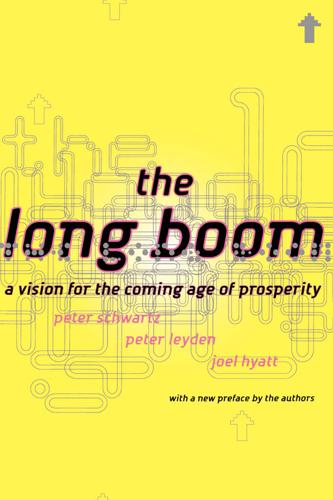
The Long Boom: A Vision for the Coming Age of Prosperity
by
Peter Schwartz
,
Peter Leyden
and
Joel Hyatt
Published 18 Oct 2000
Fuel cells, the clean energy technology that could well supersede the internal combustion engine, went from a controversial technology to a mainstream one in the last year. Today virtually every major auto and energy company has a serious investment in bringing fuel cells and the accompanying infrastructure to the market. Governments and universities are hosting conferences about how to prepare for the coming hydrogen economy. And in the last year, micro fuel cells, which can sustain power to laptops and the like for far longer than batteries, have been demonstrated for the first time. No technology has accelerated faster in the last year than nanotechnology, which is the whole new field of molecular engineering, or making devices at the atomic level.
…
Hunter Lovins, Factor Four: Doubling Wealth, Halving Resource Use: The New Report to the Club of Rome, (London: Earthscan,1997). CHAPTER 8 173 in the human body: Much of this explanation of fuel cells comes from Jacques Leslie, "Dawn of the Hydrogen Age," in Wired (October 1997), 138-191. Leyden worked closely with Leslie on this article, which was one of the first to lay out the implications of a full-fledged hydrogen economy. Many other publications soon followed with similar articles, some of which are cited in the notes here. 310 NOTES 174 Anthony DePalma, "The Great Green Hope: Are Fuel Cells the Key to Cleaner Energy?" New York Times (October 8, 1997), Dl. This article gives a very good overview of fuel cell development and prospects but, like many New York Times articles, remains fairly skeptical.

Grand Transitions: How the Modern World Was Made
by
Vaclav Smil
Published 2 Mar 2021
This claim was made first during the 1950s and then persisted until the early 1970s, when forecasts envisaged not only mass-scale adoption of water-cooled reactors but also the switch to fast-breeder reactors. Reality checks: in 2019 fission generated only about 10% of global electricity and no breeders were in commercial operation. And we are still waiting for commercially viable nuclear fusion, for the global hydrogen economy, or for mass-scale production of inexpensive biofuels (cellulosic ethanol abundantly produced by designer enzymes). And the frequency of dubious claims has been increasing as we hear daily about new and supposedly “disruptive” inventions that work in principle or in lab-bench experiments but whose mass-scale deployment may come only after decades of gradual development, or may never take place at all.
…
Cheaper nighttime electricity is used to pump water uphill and discharge it during peak demand hours, but, obviously, the uphill pumping could be done by using solar or wind power during sunny and windy hours. No other energy storage options now under development (compressed air, flywheels, supercapacitors, flow batteries) will be able to deliver storage at GW level in the near future. Using hydrogen would solve many of these problems but that would require transition to a new hydrogen economy with the gas becoming a common energy carrier in industrial uses and in surface transportation. Fourth, the transition to renewables will be much more difficult in transportation. Even in the United States, with its abundance of farmland and its ability to divert about 40% of corn from animal feed, the annual output of ethanol is equivalent to only 10% of gasoline consumption (USEIA 2018b).

50 Future Ideas You Really Need to Know
by
Richard Watson
Published 5 Nov 2013
Haptic technology The use of human touch or sensation to control machines or devices or the use of artificially created tactile sensations via joysticks, gloves or clothing to give the impression that something exists or is happening when it’s not. Links with gesture-based computing, virtual reality and immersive gaming. Holographic telepresence Full-motion 3D videoconferencing or other projections of fully realistic physical presence for business or entertainment purposes. Hydrogen economy The widescale generation and adoption of hydrogen as an alternative source of energy, especially for motive power. Inductive charging Wireless recharging. Links to the broadcasting of electricity. In vitro meat Meat that is grown or cultured in a laboratory or factory without the need for a living animal.
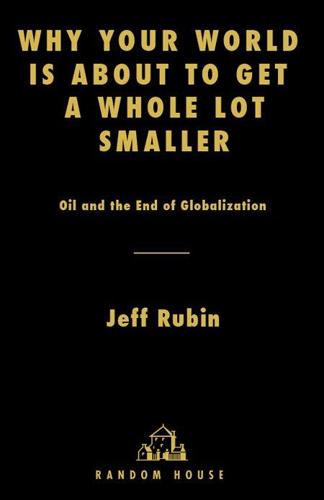
Why Your World Is About to Get a Whole Lot Smaller: Oil and the End of Globalization
by
Jeff Rubin
Published 19 May 2009
That’s $60 to $70 dollars more than carbon emissions currently cost in the US economy, the Canadian economy or the Australian economy. In short, without putting a very substantial price on carbon emissions in our economy, CCS is nothing more than a pipe dream. And speaking of monumental challenges, there is always the distant dream of tomorrow’s hydrogen economy. But if a fleet of electric cars is difficult to imagine, consider the obstacles to switching to one powered by hydrogen. For one thing, hydrogen is a lot like electricity in that it is not an energy source—it is an energy carrier. Hydrogen does not come gushing out of the ground: you have to produce it, and that takes fuel.
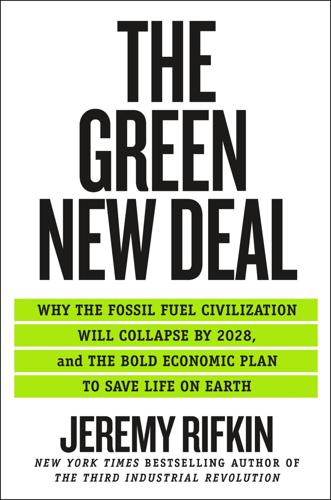
The Green New Deal: Why the Fossil Fuel Civilization Will Collapse by 2028, and the Bold Economic Plan to Save Life on Earth
by
Jeremy Rifkin
Published 9 Sep 2019
Carey, 1796) https://oll.libertyfund.org/titles/1669 (accessed May 11, 2019). CHAPTER 4 1. J.-F. Mercure et al., “Macroeconomic Impact of Stranded Fossil Fuel Assets,” Nature Climate Change 8, no. 7 (2018): 588–93, doi:10.1038/s41558-018-0182-1. 2. “Declaration of the European Parliament on Establishing a Green Hydrogen Economy and a Third Industrial Revolution in Europe Through a Partnership with Committed Regions and Cities, SMEs and Civil Society Organisations,” 2007, https://eur-lex.europa.eu/legal-content/EN/TXT/?uri=CELEX%3A52007IP0197 (accessed March 23, 2019). 3. “Directive 2009/28/EC of the European Parliament and of the Council on the Promotion of the Use of Energy from Renewable Sources,” Official Journal of the European Union (2009): L 140/17. 4.
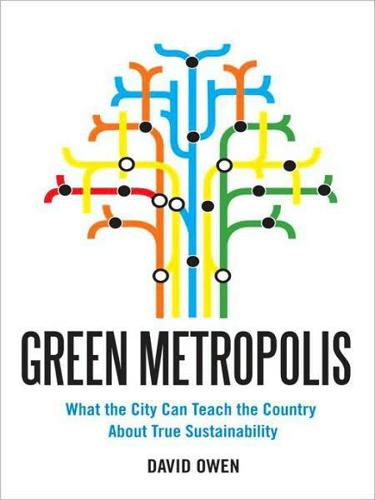
Green Metropolis: Why Living Smaller, Living Closer, and Driving Less Are Thekeys to Sustainability
by
David Owen
Published 16 Sep 2009
If domestic production reaches the more ‘optimistic’ Energy Department projection for that year, net economic costs would likely top $2 billion annually.” Hahn’s essay “Ethanol’s Bottom Line” appeared in The Wall Street Journal, November 24, 2007. 27 For a concise introduction to the extreme difficulty of economically powering cars with hydrogen, see Matthew L. Wald, “Questions About a Hydrogen Economy,” Scientific American, May 2004. 28 Romm quoted in Robert S. Boyd, “Hydrogen Cars May Be a Long Time Coming,” McClatchy Newspapers, May 15, 2007. Joseph J. Romm, The Hype about Hydrogen: Fact and Fiction in the Race to Save the Climate (Washington, D.C.: Island Press, 2005). 29 Thomas L. Friedman, “The Democratic Recession,” The New York Times, May 7, 2008. 30 World Commission on Environment and Development, Our Common Future (Oxford: Oxford University Press, 1987), p. 45. 31 Russell Gold, “As Prices Surge, Oil Giants Turn Sludge into Gold,” The Wall Street Journal, March 27, 2006. 32 The survey was conducted online, and the sample was small—just 501 respondents—and the project was partly sponsored by Archer Daniels Midland, which is not only involved in the manufacture of bioplastics but also bears a major responsibility for the economic distortions built into the U.S. corn market and for the absurd federal subsidies for the production of ethanol, but the results are consistent with my own informal sampling.
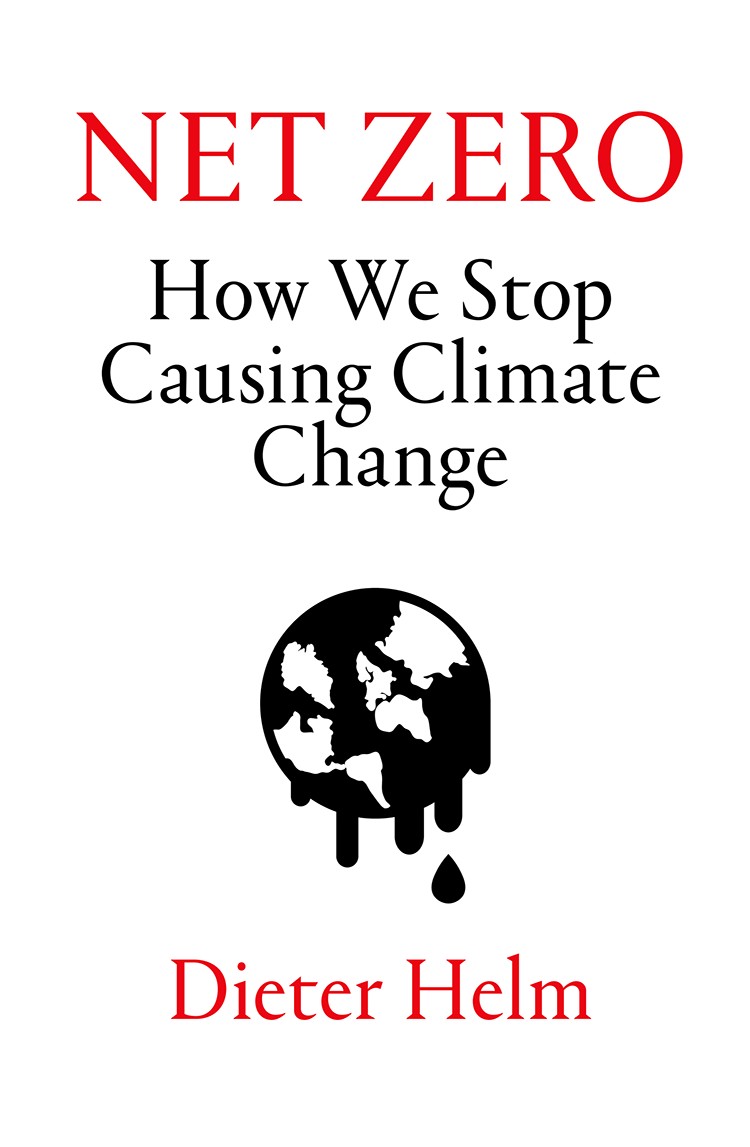
Net Zero: How We Stop Causing Climate Change
by
Dieter Helm
Published 2 Sep 2020
It could supply the UK, and from there other parts of Europe. Wind generation in northern Norway and throughout the North Sea can supply intermittent power to Europe, as indeed Denmark currently facilitates. As an alternative to electricity transmission, Iceland (geothermal) and Norway (wind) could provide the feedstock for a hydrogen economy through the process of electrolysis. In Iceland, there is potentially almost no limit to the scale with which this could be done. If hydrogen takes off as a viable fuel, initially for the harder-to-reach transport of ships and larger vehicles, and perhaps also trains, then its manufacture will, like oil and gas, be concentrated in specific geographical locations.
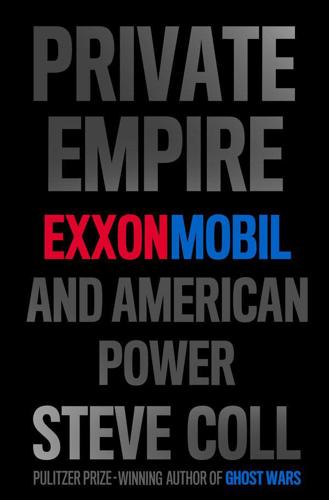
Private Empire: ExxonMobil and American Power
by
Steve Coll
Published 30 Apr 2012
It is not clear which year ExxonMobil first incorporated an assumption about carbon pricing in the United States into its forecasts, but it appears to have been around 2007, after the Democrats took control of the House of Representatives and began to gather momentum in anticipation of the 2008 presidential election. 8. “The Hydrogen Economy: Opportunities, Costs, Barriers and R&D Needs,” National Academy of Sciences Press, 2004. 9. Interview with Sally Benson. 10. “Hydrogen and Fuel Cells: Opportunities and Challenges,” slides presented in Brussels, Belgium, November 25, 2003, author’s files and www.exxonmobil.com/files/PA/Europe/Blewisfinal_Amcham.pdf. 11.
…
D8 (August 20, 1988) pps. 9341–64. Hanson, Stephanie. “China, Africa and Oil.” Council on Foreign Relations Backgrounder, June 6, 2008. Hartley, Peter R., and Kenneth B. Medlock. “Climate Policy and Energy Security: Two Sides of the Same Coin?” Baker Institute, Houston, November 19, 2008. “The Hydrogen Economy: Opportunities, Costs, Barriers and R&D Needs.” National Research Council and the National Academy of Engineering, National Academy of Sciences Press, 2004. “Interagency Support on Conflict Assessment and Mission Performance Planning for Chad.” March 20, 2006. “IPCC Second Assessment: Climate Change 1995.”

Living in a Material World: The Commodity Connection
by
Kevin Morrison
Published 15 Jul 2008
To date there has been scant tangible evidence of a technological breakthrough, despite the launch of the first fuel cell car in 1993 by METALS | 193 Ballard, the Canadian fuel cell development company. Estimates back in the 1990s of a fuel cell car market worth billions by the middle of this decade, as part of the new ‘hydrogen economy’, have so far fallen well short of the mark. This may be due to fuel cells getting caught up in the technology hype of the 1990s. The availability of platinum has meant that fuel cells remain a key part of research for the car industry, though other fuel cells have also been introduced this decade to replace batteries in mobile devices such as laptops and lawnmowers.

Gusher of Lies: The Dangerous Delusions of Energy Independence
by
Robert Bryce
Published 16 Mar 2011
Senate Committee on Energy and Natural Resources on March 7, 2006. Available: http://energy.senate.gov/public/index.cfm ?FuseAction=Hearings.Testimony&Hearing_ID=1534&Witness_ID=4345. Or see Winning the Energy Endgame, by Lovins et al., 228, discussing the final push toward “total energy independence” and the move to the hydrogen economy. 6. National Apollo Alliance Steering Committee statement. Available: http:// www.apolloalliance.org/about_the_alliance/who_we_are/steeringcommittee.cfm. 7. At approximately 1:32 into the movie, in a section that discusses what individuals can do to counter global warming, a text message comes onto the screen: “Reduce our dependence on foreign oil, help farmers grow alcohol fuels.” 8.

The Future of Technology
by
Tom Standage
Published 31 Aug 2005
But despite much publicity, and the fact that most carmakers are working on the technology, fuel-cell cars will not appear in significant quantities any time soon. America’s National Academy of Sciences, which advises the government on new technologies, recently estimated that the transition to a “hydrogen economy” will probably take decades, since many challenges remain – in particular, how to produce, store and distribute hydrogen in sufficient quantities. Hybrid cars, however, offer many of the benefits of fuel-cell vehicles, with the huge advantage that they are available now. Moreover, as the success of the Prius shows, people will actually buy them.

Growth: From Microorganisms to Megacities
by
Vaclav Smil
Published 23 Sep 2019
Rest of the world sees population stagnations and declines. Aging populations consume less and this, in combination with relative dematerialization, eases the burdens imposed on the biosphere. Economic growth moderates while advances in energy conversion and storage usher in affordable all-electric or hydrogen economies. Natural ecosystems begin their comeback, as forests have already done in Europe and parts of North America. I wish all of this came to pass as rapidly as possible—but acting as responsible risk minimizers we cannot simply hope for low-probability outcomes. There is no need to be a catastrophist in order to see what I call the great obverse: all that we have lost as a result of growth in general and mass consumption of artifacts and experiences in particular, the extent to which we have already imperiled the life on Earth, and the potential for further damage resulting from a growing population and rising aspirations.